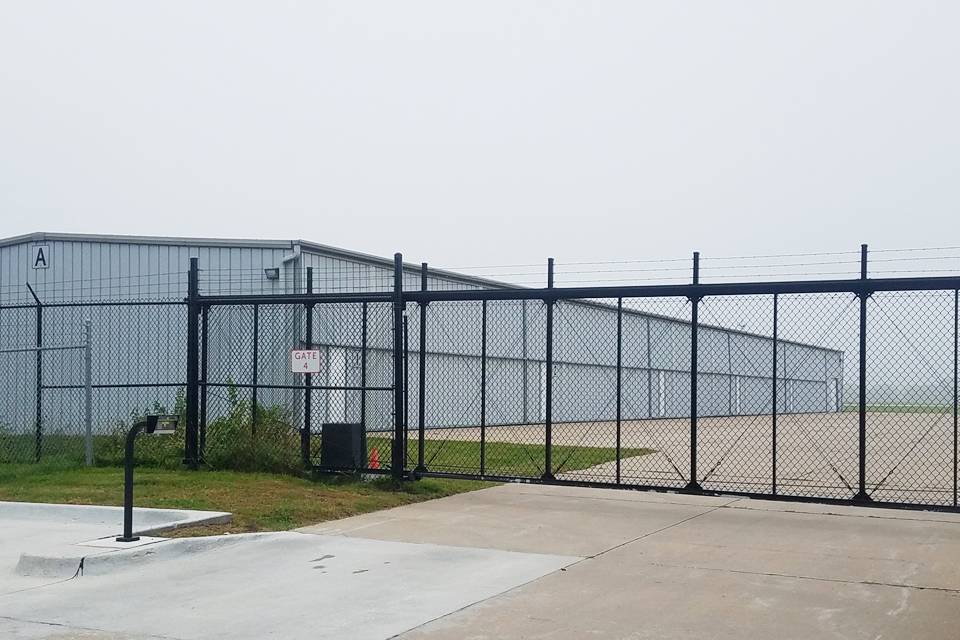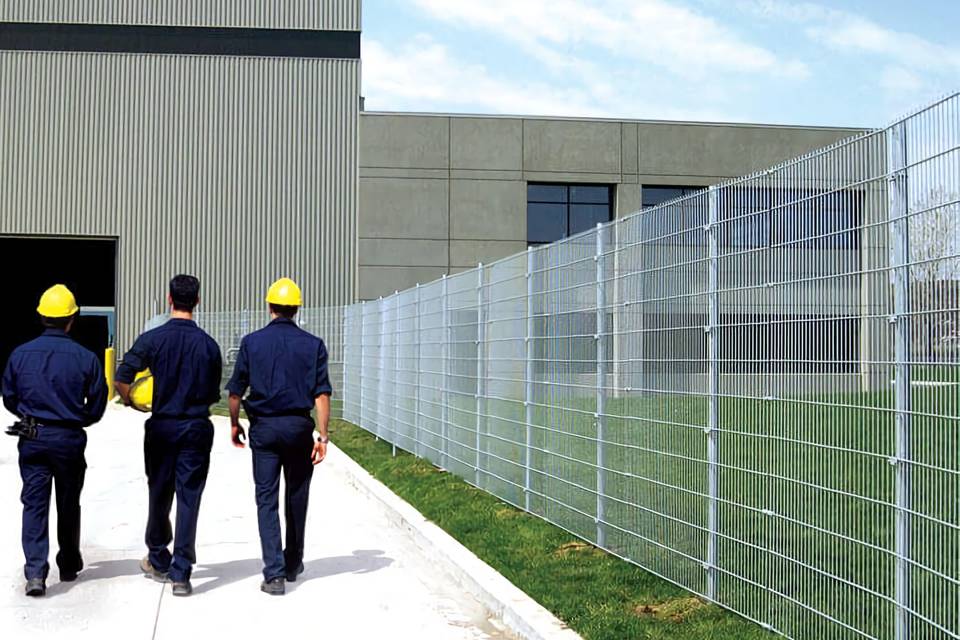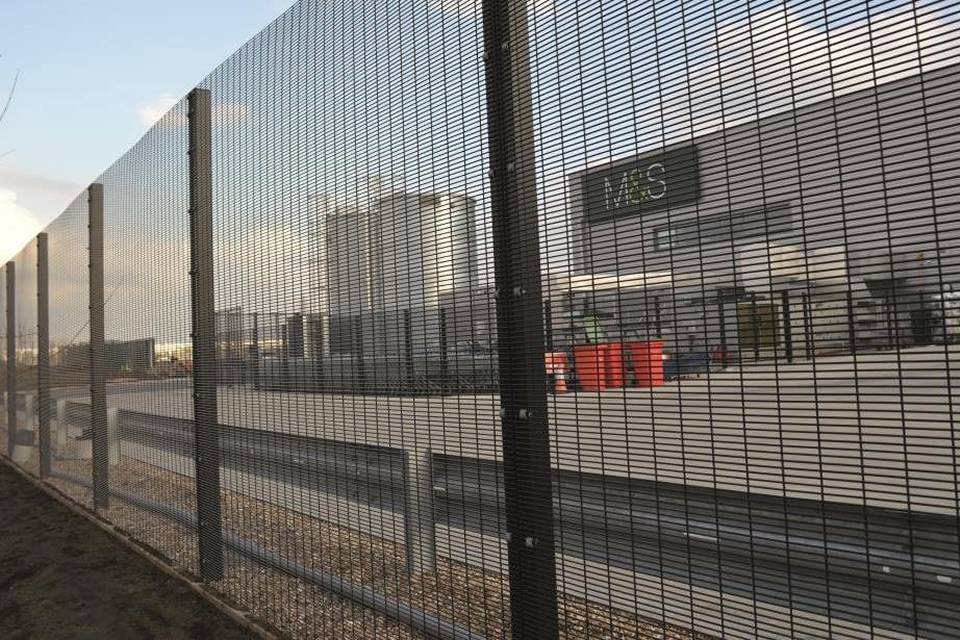Don't miss our holiday offer - 20% OFF!
Smart Industrial Fencing: How Modern Security Fences Integrate with Technology to Protect Facilities
Industrial fencing is no longer just about physical barriers. Discover how smart industrial fencing integrates with sensors, surveillance, and real-time monitoring systems to enhance facility security and operational efficiency.
Introduction
The world of industrial security is undergoing a quick change. In the digital era, conventional fencing is no longer enough to defend vulnerable infrastructure and valuable assets. Whether it is a logistics hub, energy plant, manufacturing facility, or data center, the necessity of more of a synchronized intelligent security solution has never been heightened than now.
Industrial fences of the modern form do not just act as a strong barrier. They act as the point for smart technology implementation – the surveillance systems, immediate monitoring services, automatic access control, and perimeter alerts. Fence Moine is in the center of this change of course providing not only strong steel and aluminum fencing but designs that allow for upgraded security measures as well. This article explores how smart industrial fencing improves protection, enhances monitoring, and aligns with the needs of high-security industrial environments.

The Shift from Traditional to Smart Industrial Fencing
For decades, industrial fencing has been about physical strength. Boundaries were established as well as perimeters of visual deterrence using steel, chain-link and anti-climb fences. However, with the threats today becoming even more complex, today’s threats have become complex. Unauthorized entry, sabotage, theft, and even cyber-physical attacks call for appropriate security measures.
Smart fencing is therefore an obvious development in response to these challenges. It integrates the structural advantages of the traditional fencing and smart features such as surveillance incorporation, intrusion, environmental observation, and remote access control. The aim will be to establish a protected perimeter, which is not merely a passive construction but one which is both proactive and reactive to threats.
What Makes a Fence Smart
A smart industrial fence comprises at least one technological feature which allows for real-time surveillance, detection, or automation. They are adjustable depending on the nature of the facility, risk level and conditions of the environment.
Common smart fencing components include:
- Motion sensors: Discover the physical movement around or on the fence.
- Vibration sensors: Warn security officers if somebody tries to cut, climb or cause an injury to the fence.
- Surveillance cameras: Do real-time visual monitoring of the perimetre.
- Thermal imaging: Detects heat signatures from people even when it is cloudy or foggy.
- Lighting and siren systems: Trigger warnings to intrusions.
- Smart gates: RFID, biometric, or keypad kind automated access points with entry.
- Integrated software platforms: Fences with integrated physical security device central dashboards to control and monitor all the fence-linked technologies.
These components change the fence to an intelligent system that can avoid trespasses, record events, and help to reduce the response time.
Benefits of Smart Industrial Fencing
1. Real-Time Threat Detection
In contrast to the static fences, which simply slow the intruders, smart fences are able to recognize reemergent activity. Vibration and detection sensors mounted on and/or near the fence alert the security personnel when there are unauthorized attempts reducing the window of opportunity for intrusion.
2. Enhanced Visual Monitoring
When combined with CCTV or IP-based surveillance, the use of fencing gives the first impetus to visual monitoring. Video footage can be live streamed to a control room or can be archived to cloud systems for future review.
3. Deterrence through Visibility and Alerts
The existence of cameras, sensors, and automated lighting systems in fences usually discourages the would-be intruders. Recent advances in technology can also further prevent unauthorized access using movements, that is flashing lights or audio warning triggered by movements.
4. Lower Operational Costs
The automated systems will eliminate the requirement for around-the-clock manned patrols. Facilities can use less human resources while still engaging a high level of security by use of remote monitoring and alert systems.
5. Customization for Industry Needs
Smart fences are able to be customized to the needs of a facility. For example, intrusion detection can be important for a power plant, but a logistics hub may require automated gates and vehicle tracking.

Ideal Applications of Smart Fencing
Smart industrial fencing is highly versatile and can be deployed across various sectors:
- Energy infrastructure: Protects substations, wind farms, or oil fields.
- Airports and transport hubs: Improves perimeter control featuring the surveillance and access management.
- Warehouses and distribution centers: Tracks cargo movement, and the vehicle entry.
- Manufacturing plants: Keeps the habitat secure and employees’ safe.
- Data centers: Defends against physical and digital dangers through securing sensitive locations.
- Border control and customs zones: Layered security like fences, drones and motion sensors are used.
All the use cases are advantageous from the fact that the smart fencing can detect, deter and record activity at the perimeter.
Ways in which Fence Moine supports Smart Fencing Solutions
Fence Moine produces industrial fences that are not only strong and weather resistant but are also technology-friendly. This is to say that the fences can be structurally integrated with the modern smart security tools. Features include:
- Pre-fitted for mounting points of cameras and sensors.
- Anti-climb and anti-cut design for additional physical security
- Human-Customizable heights and panel styles depending on different industries
- Galvanized steel or aluminum choices for corrosion-resistance and long life cycle.
- Integration guides for the third party security systems
When facility operators decide to hire Fence Moine, they are getting more than steel and mesh. They gain a flexible scheme for the construction of a protected and intelligent perimeter.
Smart Fencing in Action: Use Case Examples
Example 1: Logistics Distribution Center
A national logistics facility installs Fence Moine’s welded mesh industrial fencing combined with motion sensors and license plate recognition at the gates. The fencing captures the movement during the night, and security software notifies the on-call team. Real-time camera feed is assessed instantly so as to prevent unauthorized access to cargo trucks.
Example 2: Oil Refinery
Due to the high-risk nature of the location, an oil refinery uses high-strength industrial fencing from Fence Moine with integrated thermal cameras and perimeter vibration sensors. The system warns the central control room when ground vibrations are detected close to the fence line, and before intruders can even reach the main site.
Example 3: Manufacturing Plant
A multi-line factory combines J-shaped anti-climb Fence Moine barriers with smart gates that are RFID-enabled. Employees would enter and exit whereby their badges were scanned, and all the activity recorded for security audit purposes. Customers are only required to have access for QR code while being logged in and out automatically by the system.
Future Trends in Smart Industrial Fencing
With the development of technology, smart fencing is going to be increasingly clever and effective. Future trends include:
- AI-based video analytics: Find the suspicious patterns of behavior by employing smart cameras.
- Edge computing: Empowers local data processing at the fence level to facilitate speed responses
- Solar-powered security elements: Energy conservation and enhancement of sustainability.
- Drone integration: Puts together aerial surveillance and perimeter alerts.
- Wireless sensor networks: Expand coverage without costly wiring
Fence Moine is still dedicated to sustaining these innovations by creating fencing solutions that are compatible with future-ready integrations.

Conclusion
The role of industrial fencing is expanding. Not any longer a physical barrier, it is now an important element of a full-fledged security system. Threats get more cunning and defenses must become the same. Smart fencing provides managers of facilities with a means to being one-step ahead by having the physical fortitude of material meet the technologies of current security systems.
Fence Moine is ready to meet the challenge with industrial fencing solutions that are both robust and adaptable. Facilities can operate at entirely new levels of safeness, productivity, and peace of mind by combining cameras, sensors, automation, and AI. Secure your perimeter with Fence Moine – where these two meet.
